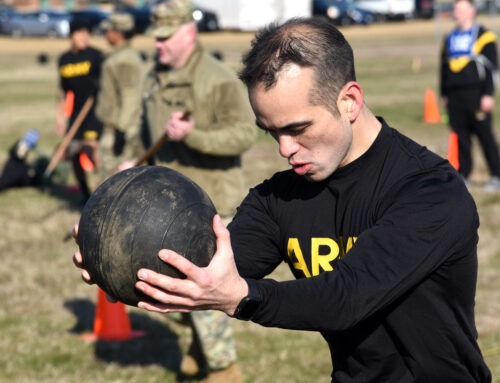Steph Gaudreau is on a mission to help women get stronger, healthier, and more athletic by breaking through social norms and the misconception that women shouldn’t lift heavy. For decades women have been told to do lots of cardio, cut calories, and lift light weights, but is this the best approach?
Steph has helped thousands of women learn how to build muscle, improve their mental health, and feel more athletic with a program that doesn’t shy away from carbs, and encourages women to load their bodies in a way that yields strength and confidence.

An interview with Steph Gaudreau, https://www.stephgaudreau.com/about/
Why do you see women shying away from weight training? Do you see common
misconceptions?
There are a few reasons I commonly hear.
The first one is that women often don’t have experience lifting yet, so there are a lot of unanswered questions about how to get started, how to navigate challenges, and so on.
The second is a fear of “getting bulky.” We want muscle growth – it’s what creates shape to the muscle (or what some people call “muscle tone”). And to get muscle to grow you have to challenge it by picking up enough weight, progressing over time as you get stronger. Women don’t have the same hormonal profile as men (ex: we have far less testosterone) and as we age, it’s even more challenging to put on “too much” muscle.
The last one is that they don’t have time. We all don’t have the same 24 hours, of course, but I think a lot of this comes down to thinking you have to lift daily or for a few hours at a time which just isn’t true. You can get a lot done in 30 minutes, two to three times a week when it comes to strength and muscle. And, with a few key pieces of equipment, you can do a lot at home as well.
Why should women in their 40s and beyond love strength training?
The phrase “use it or lose it” should be on our minds in our 40s more than ever when it comes to strength and fitness. Muscle, bone, and strength loss can begin in the 30s, and accelerates after menopause. But the GREAT news is that strength training and muscle building helps to offset these losses. It also improves other factors like quality of life, mobility, fall prevention, self-efficacy, mood, and so much more.
So many of my clients 40+ are starting this chapter of life and realizing that strength training is a powerful catalyst for not only change but also personal growth, and that’s exciting. It’s a way to do something positive for themselves, and the confidence they experience trickles out into so many other areas of their lives.
What training tools do you like women to have access to when following your programming?
They need to have enough weight to challenge their upper body and lower body. The lower body muscles are much stronger, and if you don’t have enough weight to make those muscles work hard enough, it’s common to see a plateau in strength and or muscle growth. No matter the kind of implement – dumbbells, barbell and plates, kettlebells, D-Balls, etc you need enough load.
You also need an incline / adjustable bench. It comes in handy for all sorts of upper and lower body work as well as balance and power work.
Third, I like to see some kind of station or set up for vertical pulling whether that’s a doorway pull up bar, door anchor for vertical pulling with a band, pull up bar in your garage, etc. When training at home, vertical pulling is often something that people will skip.
Lastly, having some kind of D-Ball or medicine ball for power work, including the upper body.
We know you’re a fan of heavy D-Ball accessory work. What are some specific benefits of this type of training?
Including elements of power and plyometric work are essential for folks over 40, whether you consider yourself an athlete or not. As we age, if we don’t train power and plyometrics, we lose those quick contracting Type II fibers and can lose speed and explosiveness. After menopause specifically, muscle loss accelerates and the power drop off can be even more noticeable. But the good news is you can train your Type II fibers and hang on to explosivity, quickness, and athleticism! The D-Ball is a great tool for training power and plyometrics. Plus, it’s super fun!
What are your go to exercises with the D-Ball?
Who doesn’t love a good D-Ball slam! I like to add a rotational element or a lateral shuffle into a rotational D-Ball slam for a little extra spice and bonus stress relief.
Another favorite of mine is the vertical throw. This is especially great because it’s an open chain exercise and allows you to accelerate through the whole range of motion.
My third go-to is a ground to shoulder exercise with the heavy D-Ball. You deadlift and lap the ball, then explosively propel it up to your shoulder. This mimics the motion of a barbell clean but can be much more approachable and less technical for beginners.
Video of Steph putting words into action:
Learn more about Steph Gaudreau’s “Strong with Steph” program here: https://www.stephgaudreau.com/strong-with-steph/

